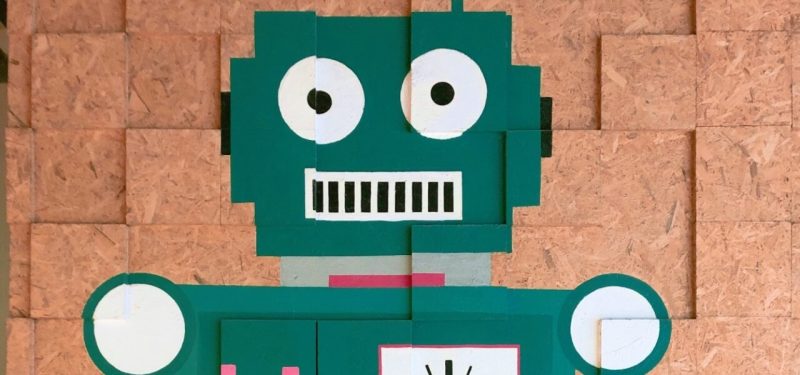If there was a big subject last year, it was artificial intelligence (AI). Expect more in the next 12 months. Machine learning is going to have an enormous, life- and work-changing effect on us all, and IT service management (ITSM) is along for the ride.
Here are five shifts you can expect to see in the year ahead.
1. Our perceptions of AI will normalize
how does AI affect ITSM and change our delivery of service? Bill Gates' comment in his book The Road Ahead is instructive: "We always overestimate the change that will occur in the next two years and underestimate the change that will occur in the next 10."
In 2019, our expectations of what AI can do for us and what to expect from it will become more tangible. In other words, we will begin to perceive AI as a normal technology concept and begin to harness its real-world capabilities, despite its current situation of over-promising while under-delivering practically.
2. The employee experience finally matters
Sure, we've seen previous efforts toward making the employee experience (EX) be all that it can be. A Forbes contributor proclaimed 2018 to be the year of employee experience. I've made similar predictions.
But for 2019, EX is really coming into the spotlight. Forrester sees EX moving to center stage. ITSM expert Stephen Mann predicts that EX measurements will be one of the main focus points of ITSM in 2019.
Employees' expectations of what IT does for them are growing. And employees are most satisfied when being productive, so it's vital to engage your IT workforce to make an impact on all employees within the organization.
3. Enterprise service management benefits mature service organizations
With increased attention on an improved employee experience comes another trend: enterprise service management at the point of user experience. Various departments must come together to provide great service, so users don't have to guess, for instance, whether to contact IT or facilities for a new company phone. Instead, they simply contact the centralized service desk.
This is not a new concept, but here's a new twist: More support departments—such as facilities, human resources, maintenance, and finance—are adopting IT processes, according to HDI, an events and services organization for the ITSM industry. This makes the leap to an enterprise service management environment all the easier, especially for mature service organizations.
4. ITIL 4 will debut and meet its moment of truth
We are seeing agile development more and more in ITSM (at least we are at TOPdesk, where I work). Likewise, the DevOps community has flourished, and IT teams are using Kanban to manage their tasks and development activities. One of the biggest challenges left to tackle is how to combine ITIL's best practices with the agile mindset.
ITIL 4, which was just released in February, aims to answer that question. In the words of Marcel Foederer, one of ITIL 4's lead architects, "The main point of adopting ITIL is to help IT organizations move at the speed that the business needs while aligning the framework with other methods, such as agile, DevOps, and with cloud computing."
However, I'm not convinced that ITIL is the way to go. I think of it as an old-school approach to most current service management environments, and not suitable in the business landscape, especially relating to ITSM.
As I also pointed out in my essay on Business 2 Community, the problem with ITIL is that those who implement it usually are legalistic in their approach, creating unnecessary rigidity. But ITIL can be important to service management, as most organizations work with its processes that are unlikely to change en masse immediately.
But apart from combining ITIL with agile approaches, other questions remain unanswered with regard to its implementation. For example, ITIL version 3 has 26 processes but no instructions or guidelines as to which processes are suitable for which kinds of organizations.
Perhaps ITIL 4 will help more with deciding what parts are relevant to your situation, a much-needed improvement for the framework and its place within an organization.
For ITIL, this year may be its moment of truth.
5. People are important
Like it or not, people are just as important as tools and processes. If you don't agree, see my point above regarding employee experience. But the culture of people merging with processes and protocols at the intersection of the service desk extends beyond users. Your teams on the other side of the service desk matter just as much; without them, there can be no other advancements in the strategies we've discussed here.
To that end, expect a push toward improved or team-centered cultures in the service desk in the year to come. Don't take just my word for it; the Service Management World 2019 conference is dedicating an entire track to the subject: "People Make the Difference: Attitude, Behavior, Culture."
There you have it, my five biggest ITSM show-stealers of the year ahead. I'll certainly be advancing these initiatives internally within my organization. Hopefully you'll join me in doing the same.
Keep learning
Choose the right ESM tool for your needs. Get up to speed with the our Buyer's Guide to Enterprise Service Management Tools
What will the next generation of enterprise service management tools look like? TechBeacon's Guide to Optimizing Enterprise Service Management offers the insights.
Discover more about IT Operations Monitoring with TechBeacon's Guide.
What's the best way to get your robotic process automation project off the ground? Find out how to choose the right tools—and the right project.
Ready to advance up the IT career ladder? TechBeacon's Careers Topic Center provides expert advice you need to prepare for your next move.


